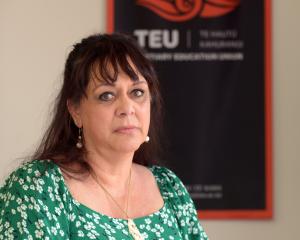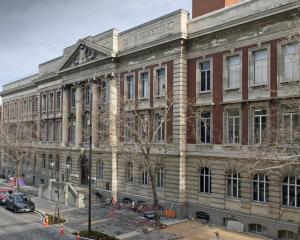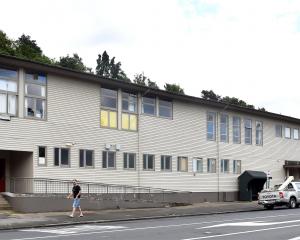
Ms Lovett (17) lives in Bluff and is a Year 13 scholarship pupil at James Hargest College in Invercargill.
She plans to pursue biological studies at Otago next year, and is also keen on a career in biomedical research.
But she says her prize-winning success has not yet fully sunk in.
"I still haven't got my head around it.
"I just can't believe that myself, this little girl from Bluff, could be nationally recognised in this way."
She had initially also felt overwhelmed earlier this year when selected for the national underwater hockey team, after participating in a series of demanding training camps.
She became part of the New Zealand under-18 women's underwater hockey team, which later won a gold medal, heavily defeating its Australian rivals in transtasman competition in Hobart in July.
"When you've got the silver fern on your togs, there's no way to describe how proud you feel."
Underwater hockey is played at the bottom of a swimming pool by two teams of six players, wearing snorkels.
Her scientific research into faecal contamination levels in mussels and cockles after periods of high rainfall or flooding showed those levels were higher and lasted longer than previously thought.
Her research, in the Riverton-Aparima area, west of Invercargill, has already been influential, with Environment Southland changing its recommendations about harvesting of shellfish after severe weather.
The public is now advised to wait five days rather than two.
"It feels so good to make an impact," she added in an interview.
The prize funding had also reduced anxieties about her tertiary study costs.
"It feels like a huge weight has been taken off."
This was one of a series of Prime Minister's Science Prizes, involving $1 million in prize money, announced by Prime Minister John Key in Auckland on Friday.
Top prize, the Prime Minister's Science Prize, went to a magnetic resonance innovation team led by Prof Paul Callaghan at the Victoria University of Wellington, for magnetic resonance discoveries that are now used throughout the world in new imaging methods.
The team receives a $500,000 prize, $400,000 of which is for furthering its research.
Other Prime Minister's 2010 prizes:MacDiarmid Emerging Scientist, University of Auckland scientist Dr Donna Rose Addis, whose leading brain research could result in new therapies for diseases such as Alzheimer's, $200,000, including $150,000 for further research; Science Teacher Prize, Steve Martin, of Howick College, Auckland, for developing a virtual classroom, using technology to deliver online science lessons, $50,000, plus $100,000 for the college; Science Media Communication Prize, Dr Cornel de Ronde, a principal scientist with GNS Science, who is making a documentary about his search for evidence of the geothermal system associated with the Pink and White Terraces, which were destroyed in the Tarawera eruption in 1886, $50,000 and another $50,000 to develop his science media communication skills.












